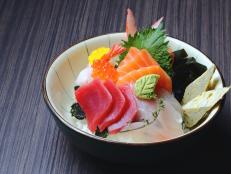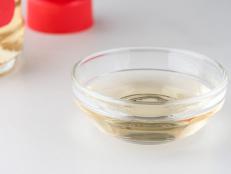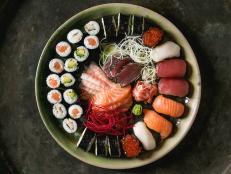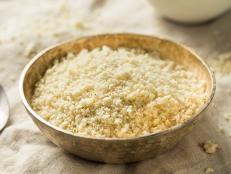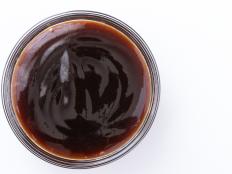What Is Tamari?
Everything you need to know about soy sauce’s gluten-free cousin.

ffolas/Getty Images
By Layla Khoury-Hanold for Food Network Kitchen
Layla Khoury-Hanold is a contributor at Food Network.
Have you ever reached for a bottle of soy sauce at your local grocery store and noticed a similar bottle labelled “tamari”? What exactly is tamari? And what’s in it? We consulted Pascale Yamashita, a recipe developer, food stylist, food photographer and avid food lover based in Japan.
What Is Tamari?
Tamari is a Japanese sauce made from fermented soybeans that originated as a by-product of miso. Yamashita describes tamari as the darkest form of Japanese soy sauce. She also offers a short history lesson: During the Kamakura period (1192 to 1333), China passed down its soy-based condiment making technique; this led to making miso and tamari in Japan. Until the Edo period (1603 to 1867), tamari was synonymous with soy sauce. Tamari is typically made in Japan’s Mie, Aichi and Gifu prefectures and in the Kyushu area.

akurashashin/Getty Images
What Is In Tamari?
Tamari is made from soybeans, water, salt and koji (fermented rice). It is the liquid that is collected from miso (a soybean paste) as it ages. In Japan, tamari is also known as miso tamari.
Soy Sauce vs. Tamari
Both soy sauce and tamari are fermented sauces made from soybeans. The main difference is that soy sauce is made from soy and wheat and tamari is made only with soy, making it vegan and gluten-free (though be sure to double check labels since some manufacturers add wheat).
Tamari typically takes longer to make than soy sauce. Because tamari ferments for one year or longer, tamari is darker in color. The lengthy fermentation process allows the soy and salt to become well blended, resulting in a smoother taste and deeper umami (which translates to “the essence of deliciousness” in Japanese and is defined by a profound savory or meaty flavor). In Japan, it’s said that tamari has twice the umami flavor of soy sauce. Tamari is also thicker, as it requires 50 to 80 percent less water to make than dark soy sauce.
There are many different types of Japanese soy sauces which are categorized into five types ranging from light to dark, and further defined by the length of fermentation and the types of ingredients used. The lighter kinds of soy sauce contain 50 percent soy and 50 percent wheat; the high wheat content imparts a sweet fragrance to the flavor profile. (In Japan, what’s typically enjoyed as a regular soy sauce is dark soy sauce.) Although tamari’s darker color might suggest that it tastes saltier than soy sauce, tamari is no saltier than dark soy sauce; light soy sauce is actually the saltiest.

Bill Oxford/Getty Images
How to Use Tamari
Tamari has a rich umami flavor and a subtle sweetness. Tamari can be used in any recipe calling for soy sauce where you want to impart a rich flavor with less saltiness. In Japan, tamari is used as dipping sauce for tofu or sashimi, in soy-sauce-based cooking and as a marinade in teriyaki recipes. Fatty pork dishes are often cooked with tamari to develop an extra rich flavor. Many Japanese cooks suggest mixing tamari into soy sauce when cooking to deepen the flavor. Try using tamari to bring a deeply savory quality to dipping sauces, marinades, dressings, stir-fries, sauces, noodle dishes and soups. For your next party trick, make candied nuts by tossing nuts in a mixture of tamari and sugar before roasting (take things spicy by adding chili paste or red pepper flakes).
Substitutes for Tamari
A simple substitute for tamari is dark soy sauce. If you’re using a lighter soy sauce, which tends to be saltier, start with ¾ of the full amount. For a more sophisticated swap, Yamashita recommends boiling 2 parts dark soy sauce, 1 part mirin and ½ part rock sugar.
Related Links:


























